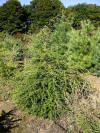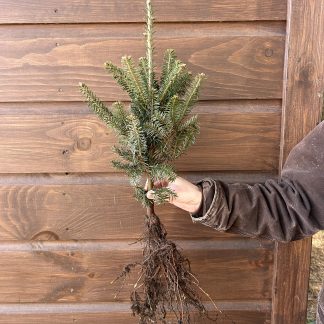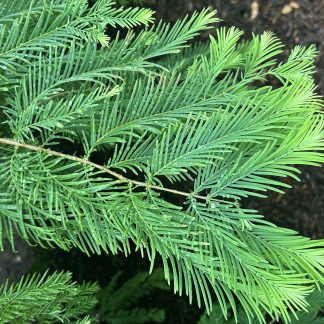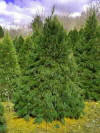Description
Canadian Hemlock or Eastern Hemlock is a graceful pyramidal tree with drooping foliage of spray-like appearance. Somewhat of a scraggly appearance. As a specimen planting Canadian Hemlock can’t be beat, it’s rugged, wild look stands as a stark contrast to the simple shape of a pine. There is a group of beautiful, mature hemlocks growing along sandstone creek in Ledges Park near Grand Ledge, Michigan that approach in size the old growth white pine in the Porcupine Mountains of Michigan. Shelter small plants from drying winds. Canadian Hemlocks stand shearing and moderate pruning well and are excellent as hedges or a wind break. Makes handsome graceful ornamental plantings. Makes a poor Christmas tree as it has poor needle retention.
Growing up to 100′ tall with a 35′ spread, they are not a small tree. Hemlocks are an easily transplanted conifer and grows well in a variety of soils. Prefers part shade but will do well in full shade or sun. Hemlock are found most commonly mixed with white cedar and yellow birch in low lying areas in the upper Midwest. Hemlocks thrive is moist soils. Canadian Hemlock are native to the eastern third of the USA and Canada,Nova Scotia to southern Ontario, Michigan to Minnesota just across the Mason-Dixon line. They can also be found in the mountains of the southeast.
Canadian Hemlock trees have short flat needles varying from dark green to light green during the growing season with a silvery underside. The needles are spirally arranged around the branch and about a 1/2 inch long. They persist for 3 years before being shed and replaced with new needles. Hemlocks flower in the month of May in Michigan. The flowers are light yellow and about 1/2″. Cones on a hemlock are small rounded 3/4″ long, ripen in the fall and are eaten by ruffed grouse and squirrels. Rabbits and deer eat the twigs. Very ornamental. The buds on a hemlock are reddish-brown. Hemlock twigs are brown, hairy, as they age they become grayish brown. Old trunks are thick, grey brown and deeply furrowed. The bark on hemlock is rich in tannin. In Michigan, the Taquamenon river has a beautiful amber color caused by hemlock, cedar and spruce tannins.
The wood is light, coarse grained, soft, and reddish brown in color. It warps very little, is strong, and splits easy. Common uses for hemlock wood are railroad ties, boxes and sheathing. It is not normally used for lumber as the knots are nearly as hard as steel. Many of the older houses in Northern Michigan are built with Hemlock beams and rafters. We vacation in beautiful hemlock log cabin in the upper peninsula of Michigan, on Otter Lake. The cabin’s owner is in his 80’s and his grandfather built the cabin. You can find pictures of the cabin at the following link (it is cabin #2). Filpus Log Cabins near Houghton in the Upper Peninsula of Michigan (exploringthenorth.com)
Probably the most damaging is the Hemlock wooly adelgid. This insect is killing most stands of hemlock. I was in the Pocono Mountains of Pennsylvania about 2009 and the scene was pure destruction. Dead hemlocks everywhere. It has been found in isolated spots in SW lower Michigan. Check the underside of the needles for white cottony spots.







